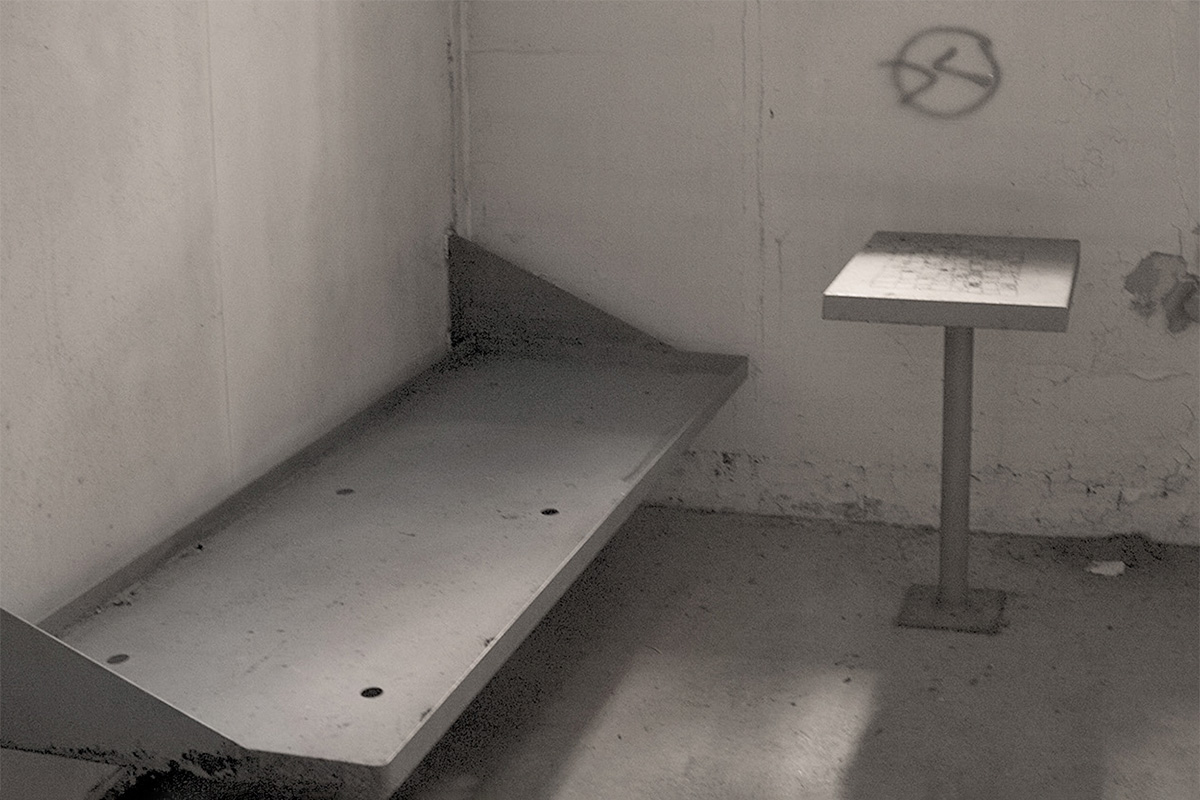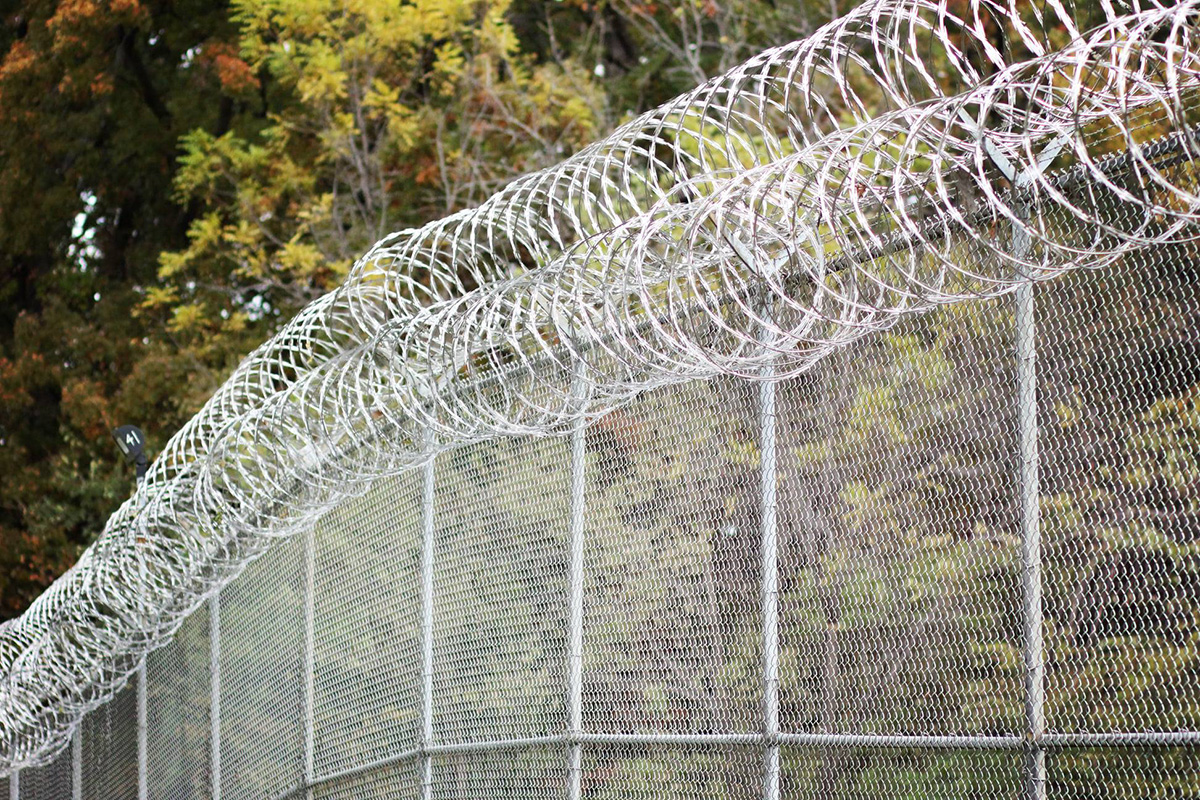Bobby Deangelo Hawthorne, 34, went into the shower at the Mississippi State Penitentiary Unit 30 on Oct. 4, 2020. Then three other inmates followed and stabbed him 12 times, killing him. Hawthorne was serving an 18-year sentence for drug trafficking and armed robbery.

A lone correctional officer in a tower removed from that area of the Parchman prison unit did not observe any disturbance at the time of the stabbing in the jail facility, which is in Sunflower County.
The U.S. Department of Justice’s Civil Rights Division released a 60-page report about Parchman conditions on April 20, 2022. It included what happened to Hawthorne as it detailed the lapses at Mississippi’s oldest, largest and only maximum-security prison, which often result in violence.
“Approximately three hours after the stabbing, an incarcerated person alerted the officer (in the tower) that another incarcerated person needed help, and she called for backup,” the report said. “When help arrived, they found the victim unresponsive, and he was pronounced dead a few minutes later.”
“One incarcerated person reported to CID that the stabbing was gang related,” the report continued. “The CID report concludes that the three aggressors stabbed the victim, and that staff failed to supervise the unit ‘due to being short on staff.’”
“The investigation report, however, does not investigate the alleged gang cause or take any interest in what happened to the apparently unrecovered weapon,” the report added.
Mississippi Department of Corrections personnel were negligent and indifferent to the well-being of the inmates by not investigating the fundamental cause of the violence so that they could prevent it from happening again, the DOJ’s report asserted.
“This homicide demonstrates MDOC’s dearth of staffing and the resulting lack of supervision that essentially leaves individuals incarcerated at Parchman on their own,” the report continued. “It further demonstrates how MDOC’s cursory investigations fail to address the underlying causes for violence, such as gang activity, or the location of the weapon after the incident to prevent future violence.”
“Finally, the incident shows how contraband, here a shank (an object sharpened into a makeshift knife) used to inflict the fatal wounds, perpetuates serious harm.”

As of at least 2018, the report continues, Parchman has been functioning with about half the needed staff, despite recent efforts to recruit and hire more employees. The investigative report released last week recommends that state authorities liaise with the National Institute of Corrections on how to boost the facility’s staff strength. The report said that “within twelve months, (Mississippi should) staff Parchman with sufficient additional correctional officers to provide security.”
The April 20 report starts the 49-day clock until June 8, 2022, when Attorney General Merrick B. Garland can legally file a case against Mississippi in federal court in line with the Civil Rights for Institutionalized Persons Act.
The 1980 law empowers the federal government to investigate state and county prisons’ problems and institute civil lawsuits against them. Garland can take the action, if “he is satisfied that the appropriate officials have had a reasonable time to take appropriate action to correct such conditions and pattern or practice, taking into consideration the time required to remodel or make necessary changes in physical facilities or relocate residents, reasonable legal or procedural requirements, the urgency of the need to correct such conditions, and other circumstances involved in correcting such condition,” the federal statute states.
A Mental-Health Fiasco
An unnamed 20-year-old Parchman inmate with a history of repeated suicide attempts spread feces all over the Unit 29 holding tank, a waiting area, on April 6, 2017. Mississippi State Penitentiary officials subsequently admitted him into the medical unit, housing him in the psychiatric observation cell.
“Mental-health staff met with the individual on April 11, 2017, and discharged him from suicide watch but kept him housed in the medical unit,” the report added. “The next morning, at approximately 8:25 a.m., the individual was observed over the CCTV tying a homemade rope made out of a bedsheet to the ventilation grate in his cell.”

There were two bedsheets in the cell, and when correctional officers arrived, they only took the one the man in Unit 29 was attempting to make into a rope. They did not place him back on suicide watch.
“About an hour later, at 9:33 am, officers noticed the person hanging from the ventilation grate by the bedsheet,” the report said. “He died.”
The report described the suicide-watch section at Parchman as posing a risk. “Some of these cells are made of metal grating, including on the ceiling of the cells, and have ceiling ventilation grates above the metal grating,” the report added. “Others have ceiling and wall ventilation grates and fixtures that protrude from the ceiling.”
“Like the suicide watch and psychiatric observation cells in the medical unit, these cells pose a risk when used to house suicidal individuals,” the report continued. “The cells designated to house suicidal individuals are not equipped with beds, forcing incarcerated persons to sleep on the cold cement floor with nothing other than a safety smock and blanket.”

The DOJ wrote that its investigators found no documented evidence that any health-care professional working at Parchman had completed a four-hour biannual suicide-prevention training. In addition, the mental-health director stated that correctional employees go through similar training, meant to last between 10 and 12 hours, in just an hour and a half.
The report continued that “staff response to suicidal emergencies is grossly delayed and inadequate, evidencing a lack of urgency, inexperience borne of deficient training, and a reluctance to provide life-saving first aid.”
Parchman Is ‘Tip of the Iceberg’
While speaking with MSNBC’s Tiffany Cross on April 23, 2022, the National Association for the Advancement of Colored People’s Legal Defense and Educational Fund Deputy Director for Litigation Jin Hee Lee said the condition at Parchman is not unique.
“The DOJ report and its findings were welcome news because the human rights violations in Parchman have been ongoing for years, and the people who are incarcerated there really deserve some sort of remedy and to be treated like human beings,” she said. “But what’s happening in Parchman is just the tip of the iceberg.”
“These human-rights violations are not unique to Parchman or any other state in Mississippi or across the South for that matter because we are currently in the United States having a humanitarian crisis when it comes to our prisons, especially the prisons in the South,” Lee added.
Of the 10 facilities where the Department of Justice’s civil-rights division has opened toll-free lines for the public to report on, six are in the south, including two in Mississippi—the Mississippi Department of Corrections facilities and the Hinds County Detention Center, located in Raymond.
‘Hundreds of Incarcerated Persons in Restrictive Housing’
One unnamed inmate in solitary confinement since September 2001 began exhibiting suicidal thoughts during weekly restrictive housing rounds in February 2021 and hanged himself with a bedsheet two weeks later. People in close custody confinement remain alone in single cells, for 23 hours per day, with one hour out of cell for recreation and showers three times per week, the April 20 report said.
“According to one of the unit officers, this individual, along with several others, had been seeking relief from the excessive heat on the unit, which was hot the entire week leading up to his death,” it read.
“When this officer asked if they could turn down the heat, unit supervisors advised not to do so,” the report added. “The (Criminal Investigative Division) investigation discovered unit temperatures of 121.2°F on the top tier and 124.5°F on the lowest tier that week.”
“Temperatures in that unit ranged from 95 to 145.1 degrees Fahrenheit, with an average of 128.4 degrees.”

The DOJ report highlighted the prolonged restriction of inmates in solitary confinement and the impact on their mental health, stating that it “implicates the Eighth Amendment requirement that prison officials cannot be deliberately indifferent to serious medical and mental-health needs.”
The DOJ referenced the 7th U.S. Court of Appeals’ 1988 ruling in a class-action lawsuit that Stateville Correctional Center, Ill., inmates in solitary confinement for 90 or more consecutive days brought against jail officials in 1993. The judges wrote that isolation could result in substantial psychological damage.
“MDOC has demonstrated a pattern or practice of prolonged restrictive housing which violates the constitutional rights of persons at risk of serious harm,” the report said. “The frequency and duration of segregation in restrictive housing, without access to showers or outside recreation, combined with egregious environmental conditions, lack of human interaction, and denial of access to adequate medical or mental-health care, compound the substantial risk of serious harm.”
“This harm has been evidenced by signs of psychological deterioration experienced by incarcerated persons at Parchman in solitary confinement, including numerous, repeated incidents of self-harm and suicide.” The portions of Parchman used for solitary confinement are Units 29 and 30.

Parchman holds hundreds of incarcerated people in restrictive housing on a daily basis for an average of about 43 months and many for several years. That does not include those on death row who may be in such a situation for decades.
“Our investigation found that not only were these persons held in restrictive housing for prolonged long periods of time, they were held in egregious environmental conditions, resulting in mental and physical harm,” the report said. “People in restrictive housing are held in dilapidated, crumbling structures with collapsing ceilings, leaking water, holes in the walls and floors, and showers that either are not working or do not have any hot water.”
“Mold is pervasive, and inoperable exhaust fans contribute to poor ventilation and extreme heat,” the report added. “In addition to facing these decrepit conditions, incarcerated persons are locked down in dark cells often without lighting, operable toilets and sinks with clean water, or mattresses or pillows.”
Attorney Lee told MSNBC that “the first step is to really recognize that, you know, the way that we treat and think about people who are incarcerated is the ultimate form of dehumanization.”

The report indicated that prolonged segregation in restrictive housing of people with severe mental disorders, such as major depressive disorder, schizophrenia and bipolar disorder, can lead to their psychological deterioration. However, “MDOC does not conduct a prior mental health review to avoid placing incarcerated persons with serious mental illness in restrictive housing,” it added.
Apart from people with significant mental illnesses in restrictive housing inflicting self-harm, 14 people committed suicide in Parchman’s Unit 29 between April 2016 and August 2021.
“We found that, contrary to statements made by several MDOC officials and staff during our interviews, incarcerated individuals are often placed in restrictive housing cells in Unit 29—not in Parchman’s mental health wing—when expressing suicidal behavior and in need of suicide watch,” the report said.
“MDOC’s failure to assess individuals with serious mental illness who are languishing in restrictive housing—even after significant incidents of self-harm or attempted suicide—amounts to deliberate indifference to the serious mental health needs of those in their custody.”
The report suggests that developing and implementing screening plans should be part of the solution to the problem. That includes ensuring consultation with mental-health staff before placing an incarcerated person in restrictive housing, or determining whether it is appropriate in light of the individual’s mental health.

The DOJ report noted the wide availability of illegal drugs in Parchman, in particular those that can cause or increase existing mental-health difficulties.
“Indeed, four persons who committed suicide at Parchman in the past three years had methamphetamine in their systems when they died,” the report noted. “Mental-health staff note observing patients who appear to be high on drugs.”
“However, staff do not take the requisite steps to test if a person is using drugs, determine what drugs they might be using, address the drug use, or design treatment goals to mitigate this.”
In her conversation with MSNBC host Tiffany Cross, Lee mentioned a client who spent many years in Parchman. “I know that his family was terrified every day about what would happen to him,” she said. “And we have to care about these people; they’re people who have too often been ignored.”
“So for elected officials, for the general public, this is not a problem that we can turn a blind eye to anymore—It is a humanitarian crisis that is happening right now.”










